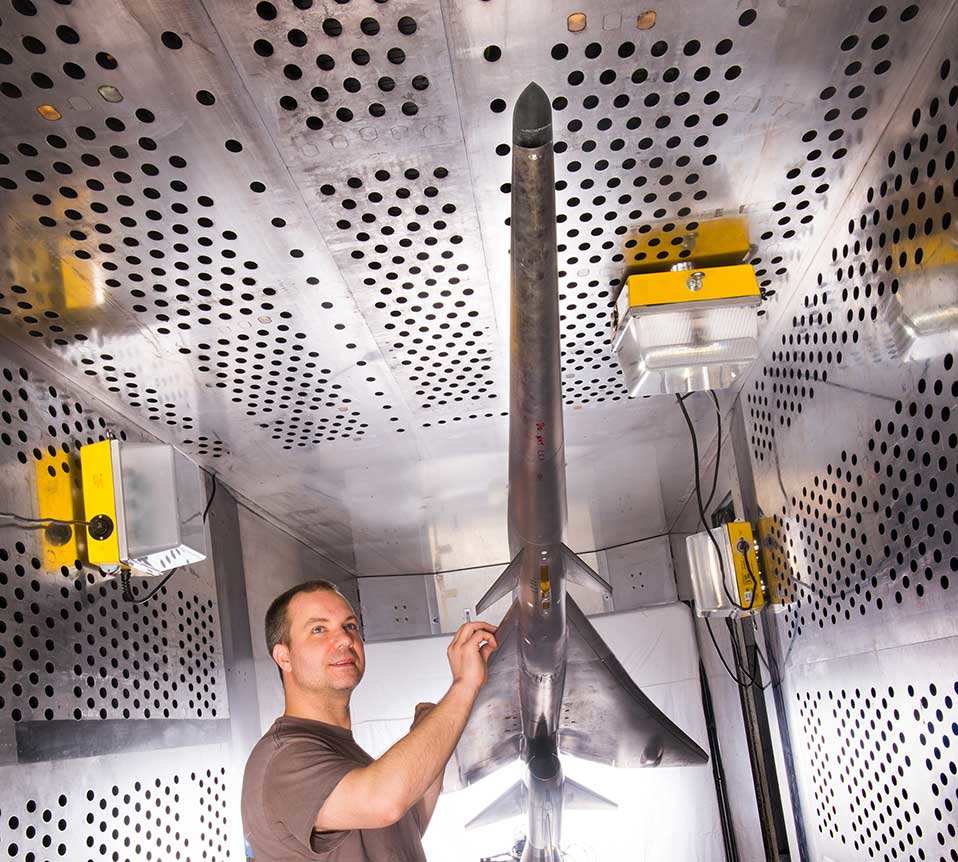NASA and Lockheed Martin have started the first high-speed wind tunnel tests for the Quiet Supersonic Technology (QueSST) X-plane preliminary design at NASA’s Glenn Research Center in Cleveland.
The agency is testing a 9% scale model of Lockheed Martin’s X-plane design in Glenn’s 8’ x 6’ Supersonic Wind Tunnel. During the next eight weeks, engineers will expose the model to wind speeds ranging from approximately 150 to 950 mph (Mach 0.3 to Mach 1.6) to understand the aerodynamics of the X-plane design as well as aspects of the propulsion system. NASA expects the QueSST X-plane to pave the way for supersonic flight over land in the not too distant future.
Work is based on the assumption — backed by recent research — that it is possible for a supersonic airplane to be shaped in such a way that the shock waves it forms when flying faster than the speed of sound can generate a sound at ground level so quiet it will hardly will be noticed by the public, if at all.
Lockheed claims that its design reduces the airplane’s noise signature to more of a “heartbeat” instead of the traditional sonic boom associated with current supersonic aircraft.
NASA awarded Lockheed Martin a contract in February 2016 for the preliminary design of a supersonic X-plane flight demonstrator. This design phase has matured the details of the aircraft shape, performance and flight systems. Wind tunnel testing and analysis is expected to continue until mid-2017. Assuming funding is approved, the agency expects to compete and award another contract for the final design, fabrication, and testing of the low-boom flight demonstration aircraft.
The QueSST design is one of a series of X-planes envisioned in NASA's New Aviation Horizons (NAH) initiative, which aims to reduce fuel use, emissions and noise through innovations in aircraft design that depart from the conventional tube-and-wing aircraft shape. The design and build phases for the NAH aircraft will be staggered over several years with the low boom flight demonstrator starting its flight campaign around 2020, with other NAH X-planes following in subsequent years, depending on funding.

